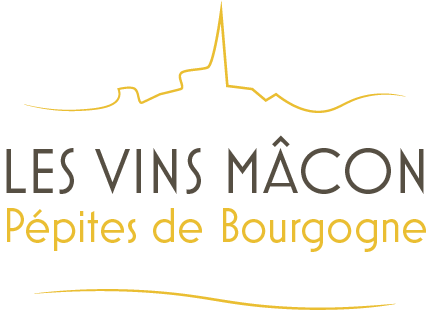Mâcon-Uchizy
The wines
White wines
Reflecting the very favorable location of the vines, the wines of Uchizy are a dazzling pale gold color. They are very expressive, the nose initially opening with ripe orchard fruits like apple, pear, and peach, and white springtime blossom like lily of the valley and acacia. A few notes of acidic candy can often be detected in younger vintages, contributing to its agreeable aromatic character. Its fleshy texture offers some very pleasant, fresh length.
Colors
Production

mâcon-Uchizy
An additional geographical denomination that is part of the Régionale Mâcon appellation in the Mâconnais.
According to the 2005 specifications rules, the name Mâcon-Uchizy refers to white wines grown within a defined area in the village of Uchizy.
Situation
Looking down over the foothills of the valley of the Saône, the vines of Mâcon-Uchizy grow on the most eastern of the Monts du Mâconnais range. The Mâcon-Chardonnay AOC can be found on the western side.
Its proximity to the waterway that runs alongside the road that was laid down in 27BC by Agrippa, son-in-law of the first Roman emperor Augustus, was a key historical factor in the early settlement of the village of Uchizy, at the foot of the slope.
Terroir
Level 1
Like that of Montbellet, the vines of Uchizy enjoy the influence of the contrasting continental climate of the Saône river corridor, with mist and cool winds in winter, and high temperatures in summer. Benefitting from the rising sun, the vines are mainly planted on slopes at between 240 and 300 meters above sea level.
Niveau 2
To the south of the valley of the Chardonnay river on the plots of La Belouze and En Monthioux, the terroir of Uchizy has a substrate alternating beds of “caille” limestone that cracks when exposed to fire, and deep marl from the Middle and Upper Jurassic, dating back some 155 million years. To the north, the top of the slope at Les Maranches has the same configuration, followed by much more carbonate terrain from the Bathonian, dating back some 167 million years, with layers of white oolite and crinoidal limestone, bearing witness to the sedimentation phases of a shallow sea, notably at Les Condemines. Then near the village, the vines grow on gentle slopes of clay and limestone pebbles formed by the erosion of the hillside, a formation already seen with Mâcon-Montbellet.

